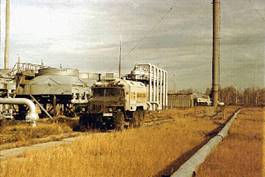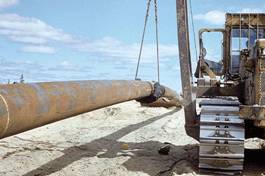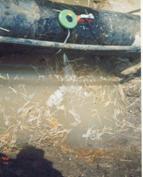Pipeline Leak Detection using Acoustic Emission
 Tested
Structures:
Tested
Structures:
-
Main
pipeline
-
Aerial, river, road and railway bed crossings
-
Pipes
of pumping and compressor stations, gas distributing stations
Applications
and
Usage:
 Defects
Identified:
Defects
Identified:
-
Cracks, lack of penetration, under-cuts,
inclusions, edge displacements in butt welding
-
Corrosion
-
Laminations
-
Leaks
-
Ice
plugs
also:
 Advantages:
Advantages:
-
Testing is performed during operating conditions
-
Inspection of whole structure
-
Inspection of areas not possible with other NDT techniques
-
Minimum access to surface for sensors mounting
-
Distant location of flaws
-
Very
efficient method of testing
-
Sensitive to growing defects, i.e. most dangerous flaws are detected
Questions for Practical Applications
 1.
What is the minimum leak to be detectable?
1.
What is the minimum leak to be detectable?
Depending on the type of fluid, the pressure difference across the
defect, the size of the defect and the instrument. Minimum 0.3 ml/sec
was reported. Generally,
1-10
ml/sec for liquid or 10-20
ml/sec for gas is more practical.
2. What is the optimum space between two sensors for leak detection?
Depending on materials under test, the leak rate, the type of fluid, the
pressure difference across the defect, the size of the defect and the
instrument. There is a trade off
 between
the detectable leak rate and the space. Maximum
250m
was reported. 50 – 125m
is usual.
between
the detectable leak rate and the space. Maximum
250m
was reported. 50 – 125m
is usual.
3. What is the frequency bandwidth which is suitable for leak detection?
Generally, the frequency of the leak noise has a character of wide
bandwidth. The sensors with the resonant frequency between 30 - 400 KHz
were frequently used.
4. How efficient for underground pipeline leak detection?
1-2
kilometers/day
is not unusual.